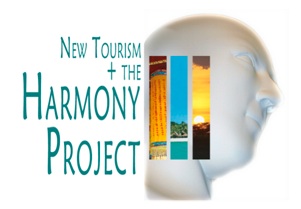


The third HP Indian Destination prospect is 4 hours south of Mumbai by road, 30 minutes by boat from the 'Gate of India', right next to the original Taj hotel on Mumbai's ocean front, 45 min by chopper from the airport. At the start of the 3 month Monsoon, one can only drive.
I landed in Mumbai at 3:30am on the 9th, got to the hotel and managed 4 hours sleep before heading south be car only to peer through the locked palace gate!
The Nawab Palace (photo above) was built around the same time as the Kasa Fort (photo below) apparently in view of its apartment windows. The two compounds and remaining embattlements and structures were constructed over the past 400 years to protect the Murud Janjira region from the Portuguese (which managed conquer only Goa). The fort is not part of the deal, as it is owned by the state and is undergoing a long renovation with parts open to the public. However, it is easy to boat to, and may give us an opportunity to participate (e.g. sponsor) and thus secure a sanctuary space/experience.
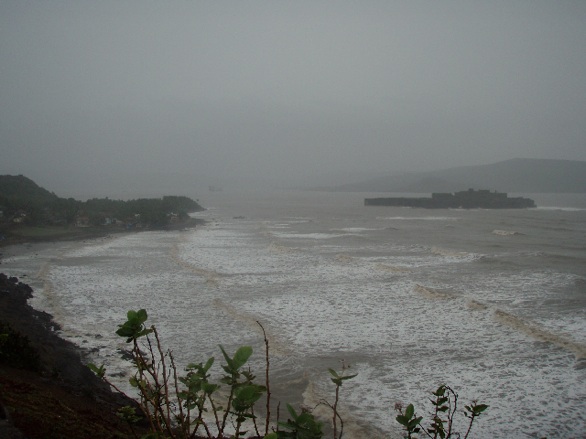
The real estate seems to be a long kidney bean shape hugging the coastal bluff with some touching down on the beach below. A public road goes through it with old bits of estate structures and wall embattlements on the beach side of the road. I suggested that we construct a completely new road away and inland from the gate if the authorities allow it.
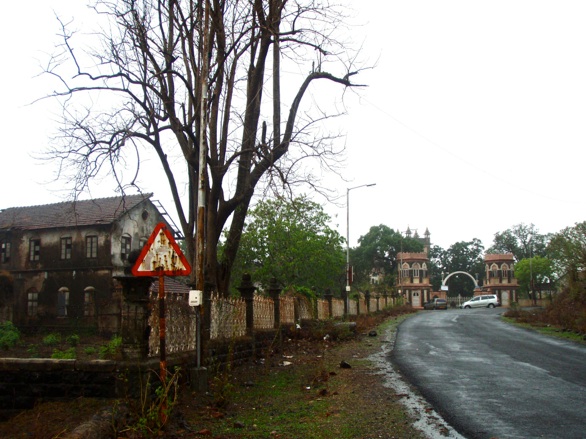
The palace is in the center bulge of the bean, the beach to the south with plenty of room for additional new-build to the north between the road and the coastline. On the northern perimeter of the estate is a charming farm area growing, naturally, rice (not part of the estate any longer). This could be purchased for real estate development. To its south, were the beach(s) are, is the village center itself.
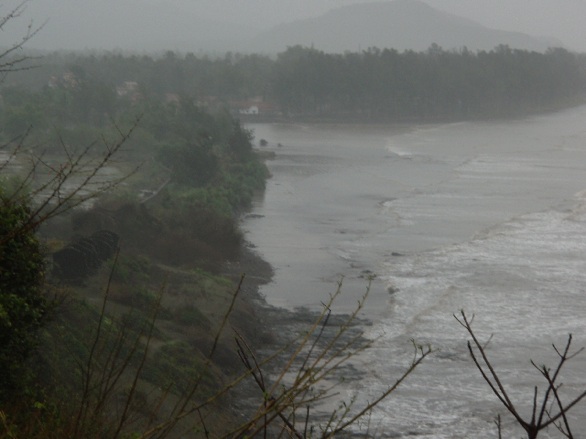
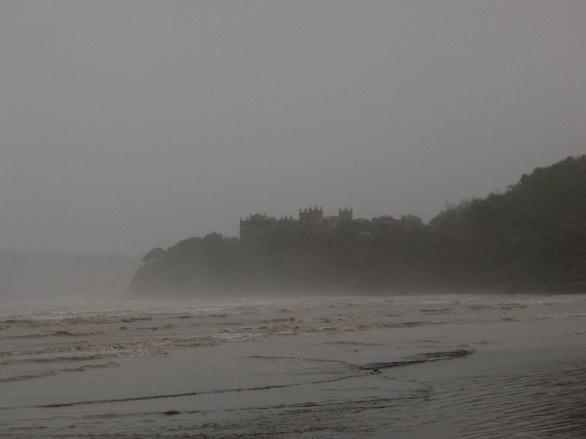
Perhaps we should install a beach house to service the area. The Monsoon and high tide give this photo a a very ominous feel indeed.
The opportunity for staff housing is down there. It is a remarkably clean and non-commercial place any tourist would love to stroll around in. It is likely the village that established itself in support of the palace and forts along the coastline.

Welcome to the Indian Ocean Monsoons




